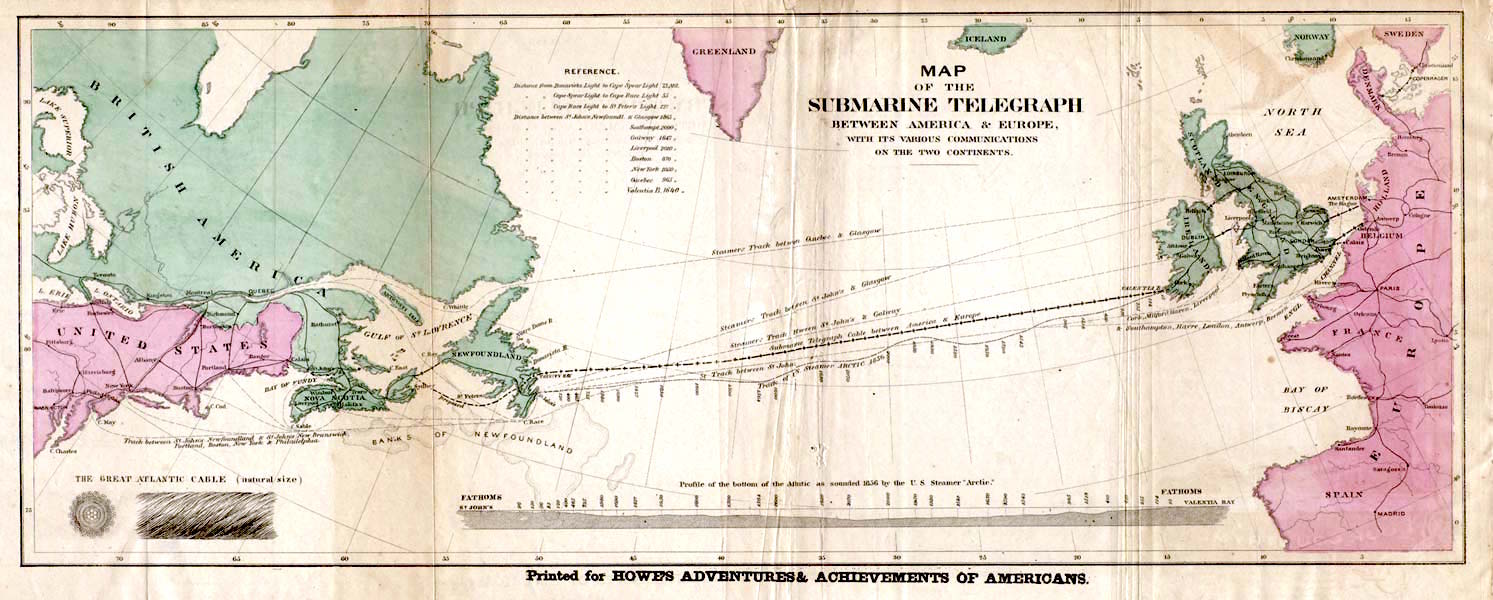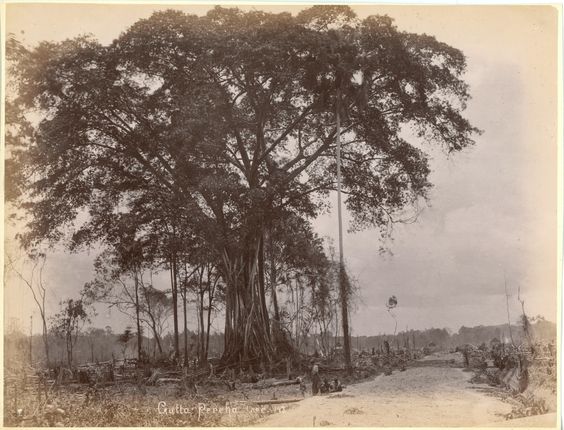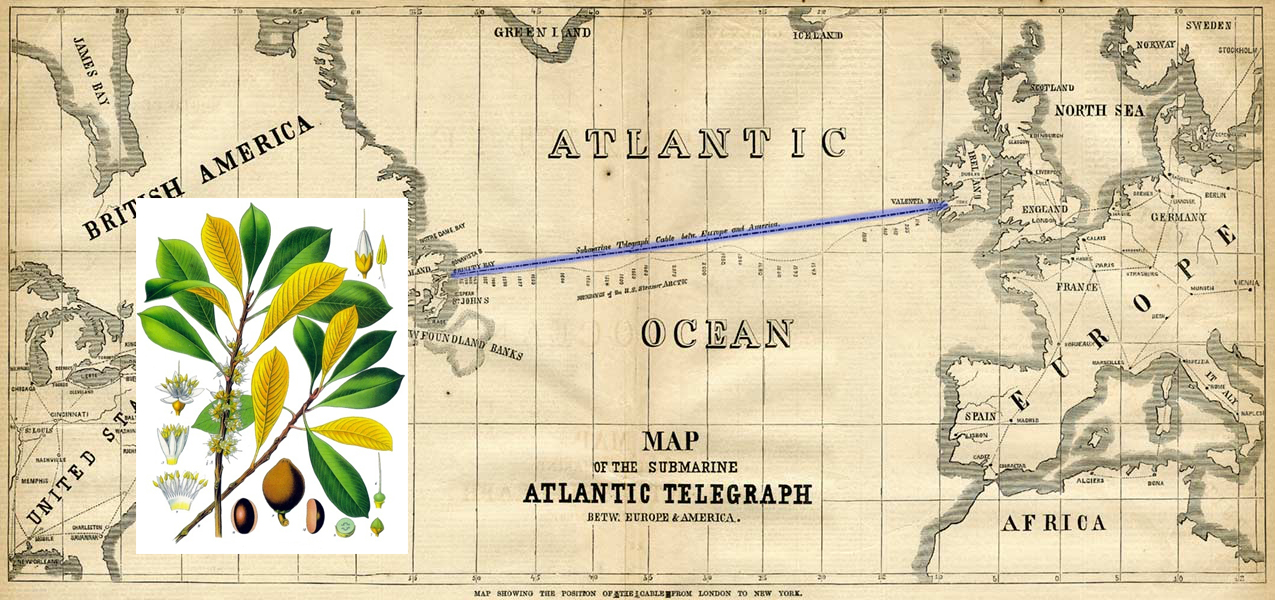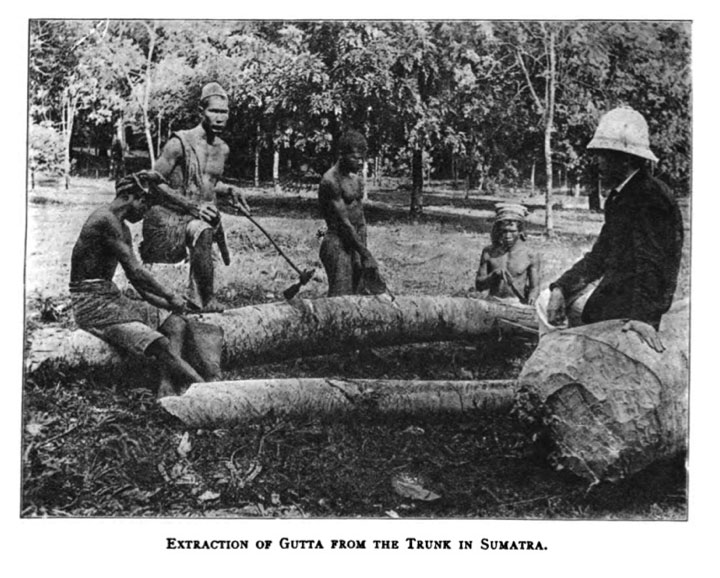On Aug. 5, 1858, the first transatlantic telegraph cable was laid by Cyrus West Field, allowing direct communication between North America and Europe.
This was an undersea cable that ran under the Atlantic Ocean to allow messages to be sent quickly between the continents.
[caption id="" align="aligncenter" width="1493"] Source: Wikipedia[/caption]
Source: Wikipedia[/caption]
Electrical messages in Morse code were relayed via the telegraph at one end, and sent through the transatlantic cable to the other end.
With the laying of the cable, a message that had previously taken about 10 days to be delivered by ship, was reduced to 17 hours.
You might be wondering what has Singapore, which is located on another side of the world, got to do with this momentous event in history.
Well, it had to do with a humble tree.
The Isonandra gutta tree
The transatlantic cable was insulated with a special material called gutta percha, a resin found from the Isonandra gutta tree (the Palaquium Gutta and Dichopsis oblongifolia) commonly found in the Malay Peninsula.
 Isonandra gutta. Via Wikipedia.
Isonandra gutta. Via Wikipedia.
According to Infopedia, the Isonandra trees are evergreen, with leaves what are "bright green and smooth" on top, and "reddish brown" with fine hairs underneath.
"The residue from the latex varies in colour from dark yellow through red to black, depending on the kind of tree from which it was obtained. The quality of gutta percha is decided by the amount of resin present in the latex juice."
[related_story]
"Discovered" by British surgeon
British surgeon William Montgomerie "discovered" the useful resin when he noticed Malay natives using it to create handles for their machetes (or parangs).
It particularly fascinated Montgomerie because the latex could be moulded in hot water but would harden upon cooling.
 Gutta percha tree. Via Pinterest.
Gutta percha tree. Via Pinterest.
Montgomerie later brought this wonder substance to the West in 1843, and after some experimentation, managed to create medical instruments using gutta percha.
The resin from the tree is first extracted via tapping, then coagulated and then moulded into blocks of latex which could be used for various purposes such as medicine, buttons, seals, belts, footwear soles, and jewellery.
Gutta percha was harvested from rainforests along the Malay Peninsula and in the surrounding regions (such as Java) before being washed and rubbed into blocks.
These blocks were then transported to Singapore, Britain's colonial entrepôt, to be exported or manufactured into submarine cable sheaths, contributing to developments such as the first transatlantic telegraph cable.
However, Gutta percha did not remain in favour for long. It was found to be unstable after long exposure to sunlight and oxygen.
It was used for nearly a century as insulation for cable wires before being replaced by polyethylene.
Over time, the transatlantic telegraph cables were also replaced by modern telecommunications cables, which allowed the internet to be developed.
Top images via Wikipedia and Atlantic-cable.com
If you like what you read, follow us on Facebook, Instagram, Twitter and Telegram to get the latest updates.

